The Story of Culture and Arts
- Image resource of Korean history
- Documents from History TextBooks
- Culture & Art Stories from Korean History
- Culture & Art Stories from Korean History - Korean
- National Institute of Korean History
- History net
- About the site
- Introduce
-
Numerous topics related to Korean culture and art are mentioned in middle and high school national history textbooks, but most of them are briefly described by era, making it difficult to understand their concepts, transition processes, and characteristics.
<Culture & Art Stories from Korean History> produces and provides video materials based on expert commentary on the flow, change process, characteristics and characteristics of each major topic in the field of culture and art in Korean history.

Scenario
The seowon, a Joseon-period Confucian academy that nurtured talent and honored a teacher’s thinking. Let us visit the Dosan and Byeongsan Seowon in the Andong region and learn about the beauty and value of these Confucian academies.
Dosan Seowon
Andong sits along the banks of the Nakdong River and is where Joseon’s leading Confucian scholar Yi Hwang and his students studied. It is the heart of Confucian scholarly culture in Korea.
The Dosan Seowon was Korea’s most renowned Confucian academy and a testament to the architectural beauty of these academies. It was one of the headquarters for Confucian scholars in the late Joseon period and designated a royally chartered academy, or sa-aek seowon, after the death of Yi Hwang.
Dosan Seowon consists of the seodang area centering around a lecture hall designed and built by Yi Hwang for instructing his students, and the shrine and temple area built by Yi Hwang’s students to pay homage to their teacher and his work.
The lecture hall, a simple yet elegant three-room structure, perfectly embodies Confucian scholar Yi Hwang’s pure and noble spirit. Beside it stands the student dormitory, the Nongun Jeongsa. Designed by the teacher himself, here the students could behold all the scenes of nature and understand his teachings.
Above that is the Jeongyodang Hall for Confucian studies, built by Yi Hwang’s students after his death, and the Sangdeoksa Shrine housing Yi Hwang’s spirit tablet. The Jangpangak is an important building at the academy and the center of knowledge for the local community. It houses the academy’s books and wooden printing blocks.
The Dosan Seowon, where nature and Confucian ideals live. Its every corner embodies a Confucian gentleman’s propriety and integrity. The architecture of the academy was planned to fully capture the ideals of Confucianism and views of nature.
Byeongsan Seowon
The Byeongsan Seowon in Andong also displays the architectural beauty of a Confucian academy. Beyond Bongnyemun gate, which symbolizes the importance of propriety, is a pavilion where students studied and enjoyed nature.
This is the Mandaeru Pavilion. In this space that embraces nature as it is, you get a true sense of the character of seowon architecture that emphasizes harmony with nature.
Passing the Mandaeru, we enter the yard. There, we see the Ipgyodang study space and the dongjae and seojae student dormitories. Above it is the Jondeoksa Shrine for rites.
[Epilogue]
The Dosan and Byeongsan Seowon, two places that were more than just places of learning. Through their architecture, they also manifest harmony with nature and the teachings of past sages.Throughout these nature-embracing spaces, you’ll find a new appreciation for the spirit of Confucian scholarship and the value of learning.
-------------------------------------
Advisor: Cho Jaemo
Script/Storyboard: Kwak Kiyeon
Editor: Jung Yeonsang, Myung Jaerim, Seo Myungwon
Narrator: Mary Katherine Chadwick
Filming: Yoon Suwon
General Editing: Park Injoon, Lee Seungsin
Illustrations: Kim Jongseok, Shim Hui-young
Recording/Music: Jo Donghyo
Logo: Min Seung-ook
Materials/Resources: Bank of Korea, Leeum Museum of Art, Korea Heritage Service, Korea Heritage Agency, K-Heritage Channel, Dosan Seowon
English Translation & Editing: Mary Katherine Chadwick, Daniel Kane, Lee Jaeyeol
Production Manager: Yoon Jongwon, Kim Kiwon
Administration: Kim Sanghee
Director: Shin Junghwa
Architecture
17 films-
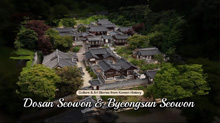 Dosan Seowon & Byeongsan Seowon03:56
Dosan Seowon & Byeongsan Seowon03:56 -
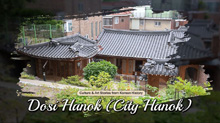 Dosi Hanok (City Hanok)03:51
Dosi Hanok (City Hanok)03:51 -
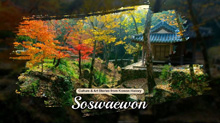 Soswaewon03:43
Soswaewon03:43 -
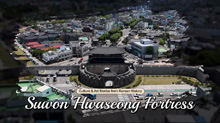 Suwon Hwaseong Fortress03:57
Suwon Hwaseong Fortress03:57 -
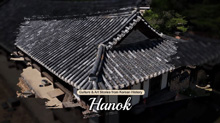 Hanok06:40
Hanok06:40 -
 Fortresses - walled towns in Korea09:15
Fortresses - walled towns in Korea09:15 -
 Joseon Palaces08:46
Joseon Palaces08:46 -
 Korean Gardens08:34
Korean Gardens08:34 -
 Jongmyo, the Royal Shrine of Traditional Korea09:05
Jongmyo, the Royal Shrine of Traditional Korea09:05 -
 Seokbinggo, or Stone Ice Storage08:18
Seokbinggo, or Stone Ice Storage08:18 -
 Seowon, a Neo-Confucian Academy08:22
Seowon, a Neo-Confucian Academy08:22 -
 Buddhist Temple Architecture08:28
Buddhist Temple Architecture08:28 -
 Fortresses of Korea09:12
Fortresses of Korea09:12 -
 Stone Pagodas07:13
Stone Pagodas07:13 -
 Tombs09:36
Tombs09:36 -
 Capital Cities and Royal Palaces08:55
Capital Cities and Royal Palaces08:55 -
 Roof Tiles07:48
Roof Tiles07:48

